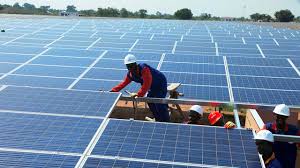In a major step toward transforming its energy sector, the Government of Uganda has approved the development of a 100-megawatt (MW) solar photovoltaic power plant coupled with a 250 megawatt-hour (MWh) battery energy storage system. The facility, to be built in Kapeeka, marks the first phase of Uganda’s ambitious plan to deploy over 1 gigawatt (GW) of solar and battery storage capacity nationwide.
The project will be developed by U.S.-based Energy America, with its regional subsidiary, EA Astrovolt, serving as the lead project developer and implementation partner.
Approved under Section 16 of the Electricity Act, the directive reflects Uganda’s strategic shift toward renewable energy. The initiative supports Vision 2040, the country’s long-term development plan, and aligns with the National Energy Policy 2023, which targets universal access to reliable and affordable electricity while cutting dependence on fossil fuels.
Energy Minister Dr. Ruth Nankabirwa Ssentamu said the project would not only increase clean energy supply but also strengthen grid reliability and create local opportunities:
“This development represents a significant milestone for Uganda. It brings advanced clean energy technology, creates skilled jobs, and helps us achieve energy equity across all regions,” said Dr. Nankabirwa.
The Kapeeka facility will feature:
High-efficiency solar modules optimized for tropical climates
Scalable battery architecture for dynamic energy storage
Centralized monitoring systems for performance optimization
Grid integration readiness to support national energy demand
EA Astrovolt will oversee regulatory compliance, stakeholder engagement, and long-term system management. The project will undergo a feasibility study, and the Electricity Regulatory Authority (ERA) will determine the tariff structure.
A Power Purchase Agreement (PPA) will be negotiated with the Uganda Electricity Transmission Company Limited (UETCL), the national bulk power purchaser.
Financing discussions are already underway, with expected support from key U.S. institutions, including the Export-Import Bank of the United States (EXIM Bank) and the U.S. International Development Finance Corporation (DFC).
Phase I of the Kapeeka plant is intended to serve as the anchor for future solar and storage deployments, potentially scaling beyond 1 GW of clean energy capacity in the coming years.
Currently, only 57% of Ugandans have access to electricity, and the country is seeking to diversify its energy mix, which is largely dependent on hydroelectric power. Rising demand, rapid urbanization, and climate-related challenges affecting hydropower generation have increased the urgency for alternative, sustainable energy sources.
This new solar and battery project comes at a critical time, offering a climate-resilient solution that also supports the government’s economic growth goals.
Key Project Highlights:
Project Name: Kapeeka Solar + Storage Project (Phase I)
Capacity: 100 MW solar + 250 MWh battery storage
Developer: Energy America (USA) / EA Astrovolt (East Africa)
Feasibility Study: To be conducted by EA Astrovolt
Financing Partners: U.S. EXIM Bank, DFC (expected)
PPA Partner: Uganda Electricity Transmission Company Limited
Policy Framework: Vision 2040 & National Energy Policy 2023
Target Impact: Grid resilience, job creation, skills transfer, energy access
Uganda’s approval of the 100 MW Kapeeka solar and battery project marks a bold leap toward clean energy independence, grid modernization, and universal electrification. With international financing and scalable infrastructure, the country is laying the foundation for a more sustainable and resilient energy future.



